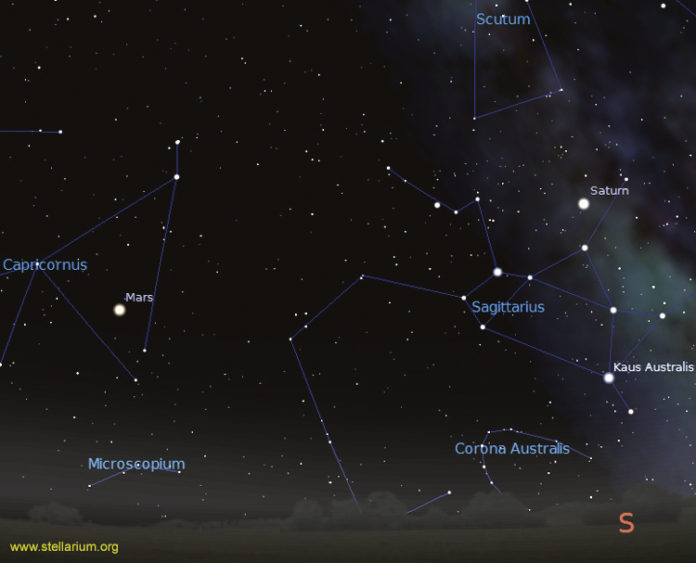Amateur and professional astronomers alike are looking forward to Friday night as Mars will make its closest pass to earth since 2003.
The red planet and Earth’s closest neighbour has been growing ever nearer, rising in the southeast at about midnight, shining with a solid, red glow.
Mars and Earth come closest to each other in their orbits every 26 months, but since the two orbits are slightly tilted, not every close approach is equal. That’s why this approach is so special, said Gary Boyle, who teaches people about astronomy as the backyard astronomer.
When Mars gets close like this, he said, it makes it easier to spot the red planet in fairly high detail with a telescope.
Unfortunately, this year, the whole planet is covered by a global dust story. While it will still be neat to look at through a telescope, unfortunately, due to the dust storm, it will be hard to make out any features of the planet’s crust.
Still, he said, it’s an event not to be missed. Mars only comes close enough for this detailed viewing every 15 to 17 years.
Mars will be rising a bit earlier each night until Friday when it will be seen as early as 11:15 p.m., close to the full moon. It will continue to brighten over the next few weeks as it moves closer and will be even brighter than Jupiter.
This time of year is special, Boyle said, because all seven heavenly bodies that match up with the seven days of the week will be, at some point, visible in the sky.
Sunday is the sun, Monday the moon, Tuesday Mars, Wednesday Mercury, Thursday Jupiter, Friday Venus and Saturday Saturn. Days of the week were named for the planetary bodies in many traditions, including the Greco-Roman tradition, where many Latin-based languages still line up with the translations of the planets’ names.
The close approach is also exciting, Boyle said, because of humankind’s obsession with the red planet. He points to Italian astronomer Giovanni Schiaparelli as one of the inspirations for our curiousness about Mars. Schiaparelli claimed to have seen canals on the planet in 1877, suggesting they could be artificial structures of a possible civilization. The planet is also our next frontier in space, with both NASA and Elon Musk proposing sending humans on a one-way trip to Mars by 2030.
Even then, with the planets at their closest, the journey will still take about seven months.
Even with the close approach, the planets remain over 54.6 million km apart.


